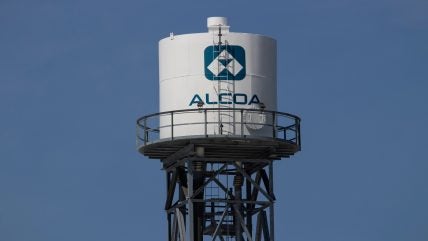Sign up for daily news updates from CleanTechnica on email. Or follow us on Google News!
New Tool Estimates Cost To Build New Pumped Storage Hydropower Facilities To Support a Clean Energy Grid
Mountains—could soon store a whole lot of clean energy. These vertically blessed places are ideal spots for a well-established form of energy storage that is getting renewed attention: pumped storage hydropower.
As the country transitions to a clean power grid, researchers are searching for the best ways to store energy to use when winds slow down, clouds block the sun, and the grid needs a boost. Some experts are hoping to forge better batteries, like the well-loved lithium-ion batteries that power electric cars. But batteries are like cheetahs—they often run best for short distances. Pumped storage hydropower may be older technology but, like us endurance-running humans, can outlast their competition, often storing energy for eight to 12 hours at a time or more. Utility-scale batteries are often too expensive if they are built to store more than four hours of energy.
“Pumped storage hydropower is maybe the most promising energy storage solution we have to achieve the huge ramp up needed to achieve a clean electricity sector,” said Daniel Inman, a researcher at the National Renewable Energy Laboratory (NREL) who studies the economics behind these energy storage technologies.
Pumped storage hydropower plants rely on two reservoirs, one situated at a higher elevation, to store energy. Using excess energy from wind turbines, solar panels, and other power plants, water is pumped up into the top reservoir; when the grid needs more energy to meet demand, that water is released and flows down, spinning a turbine to generate clean electricity.
Despite their great promise, few new pumped storage hydropower facilities have been built since the 1970s—in part because these technologies often come with high upfront costs and reservoirs can impact the environment, especially if they are connected to a river. Today, investors are considering a more environmentally friendly option: closed-loop systems, which are separated from naturally flowing waterways.
But the decades-long gap since a pumped storage facility was last constructed in the United States makes it difficult to predict how much closed-loop facilities might cost, especially for people and organizations without much experience building these types of plants. And that means developers and grid planners lack the data needed to make informed decisions about how many new facilities the country could or should build to support its evolving grid.
That is why Inman—along with fellow NREL researchers Stuart Cohen, Vignesh Ramasamy, and Evan Rosenlieb—created a new cost-estimation tool that can evaluate the potential construction and labor costs associated with closed-loop pumped storage hydropower plants.
Pumped storage hydropower is the biggest source of grid-scale energy storage capacity in the United States, accounting for about 96% in 2022. And yet, according to Inman, closed-loop pumped storage hydropower has been overlooked in the last decade, despite the fact that the technology protects ecosystems better than most traditional open-loop plants (those that are built alongside rivers). Pumped hydro facilities also provide grid inertia—if a snag cuts off power temporarily, a facility’s large turbines continue spinning, helping to bridge that power gap.
Earlier, in 2017, researchers at Australian National University published a basic cost estimation tool for pumped storage hydropower. While their tool provides broad, generic cost estimates using a few core characteristics of pumped storage systems, the NREL model is far more detailed. With this new tool, users can select a wider range of desired system characteristics and account for local geology, labor rates, and inflation, among other factors.
“This tool allows potential project developers to get a ballpark figure for what a particular facility might cost,” Inman said. “And a more realistic cost estimation would allow us to develop capacity expansion modeling results that are more realistic.”
For grid planners, this tool could provide a more accurate picture of how many pumped storage hydropower facilities could reasonably be built over the coming decades—an important metric in understanding what kind of energy storage the country’s future grid might have or need.
To create a reliable and resilient clean power grid, the world is likely to need both batteries and new pumped storage hydropower facilities. Now, thanks to NREL’s new cost estimation tool, it is easier than ever to estimate how and where these two technologies can work together to build that future.
Learn more about NREL’s pumped storage hydropower cost estimation tool. And remember to subscribe to the NREL water power newsletter, The Current, to make sure you don’t miss a water power update.
By Caitlin McDermott-Murphy, the Department of Energy, NREL
Have a tip for CleanTechnica? Want to advertise? Want to suggest a guest for our CleanTech Talk podcast? Contact us here.
Latest CleanTechnica TV Video
CleanTechnica uses affiliate links. See our policy here.





